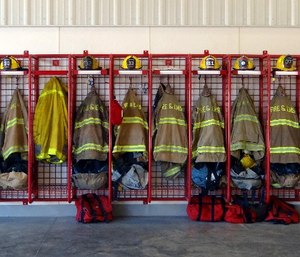
Tracking your first due area demographics, response details, and firefighter gear and apparatus details will make applying for grants a breeze
We’re collecting a wealth of information about fire behavior and fire service response. FireRescue1’s special coverage series, Embracing the data revolution in the fire service, sponsored by ESO, explores strategies for translating this data to actionable steps to improve operations, optimally direct fire response and maximize firefighter safety.
There is no doubt that we have entered the information age. We are bombarded with constant data. Our desktops, laptops, tablets, cellphones and other devices are filled with information. In the past, we had to search through volumes of books, records or other documents to find the material we were looking for.
Accessing this information has never been easier, however, for some reason we fail to utilize this data to our benefit when writing grant applications.
It doesn’t matter if it is your department’s AFG application or a grant application to a local foundation, including pertinent data in your narratives will help your application to be more competitive. Simply using broad, unqualified phrases like, “we are answering more alarms,” or “the economy in our area is bad” is going to leave the reviewer with more questions than answers.
Stocking your narratives with specific information to backup statements like this will help your request.
To initiate your data collection, you will need to develop a demographic profile of your coverage area and your department.
To start your profile, access the U.S. Census data . For every community in your first due area, at a minimum you should know:
This data will help you to document the economic conditions in your coverage area. This information will help explain why your department doesn’t have the local financial resources to support your request.
It is always beneficial to have specific information on the type of risks your department faces in your first due area. To address this need, develop a list of critical infrastructure in your first due area, including:
The next segment of the planning process involves an assessment of your department’s equipment, PPE and apparatus. Begin by examining your department’s fire reports for the past year. I know we all hate to complete those run reports, however, the information from our incidents can provide us with a treasure trove of data for our applications.
At a minimum, look at the number and type of alarms you occurred, as well as any special circumstances your department encountered:
Compare this data to the past three-five years of alarms. What is the data from your alarm reports telling you?
Next, examine your current inventory of equipment, PPE and apparatus. As you purchase new items, enter them into your inventory with the date they were purchased. Keep track of maintenance and repairs to your equipment and apparatus. When you are faced with questions about the age of an item you are requesting in a grant application, the data will be at your fingertips.
Have maintenance and repair costs negatively impacted your budget? With the proper data, you can quickly and easily answer this question and provide specific examples to help backup your request. Is outdated equipment or a lack of adequate equipment posing a safety hazard to your firefighters or the community? Remember the injury data in your incident reports? That information will help you to answer this question with real numbers.
Take the time to develop a data profile and keep it up to date. Yes, this may mean spending a little extra time after an alarm, but overall, all this data will pay dividends when you go to apply for grant funding.
Copyright © 2025 FireGrantsHelp.com. All rights reserved.

